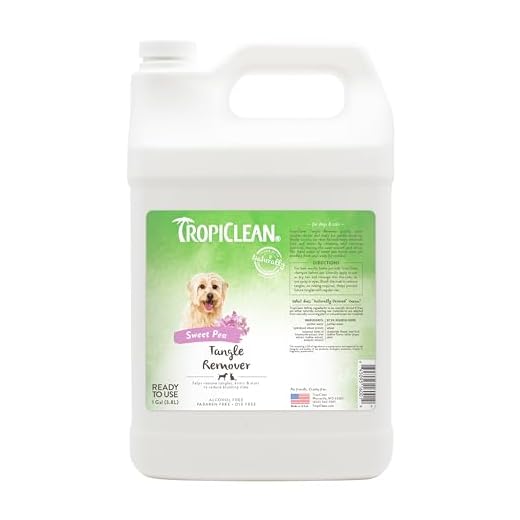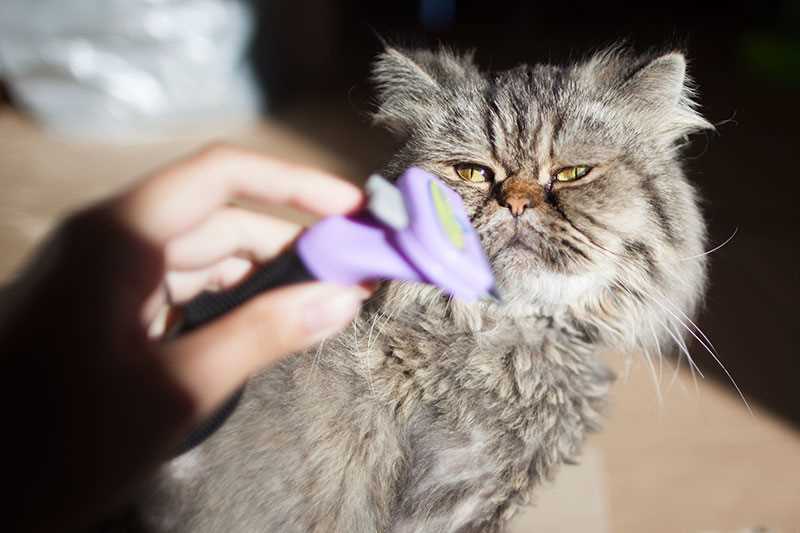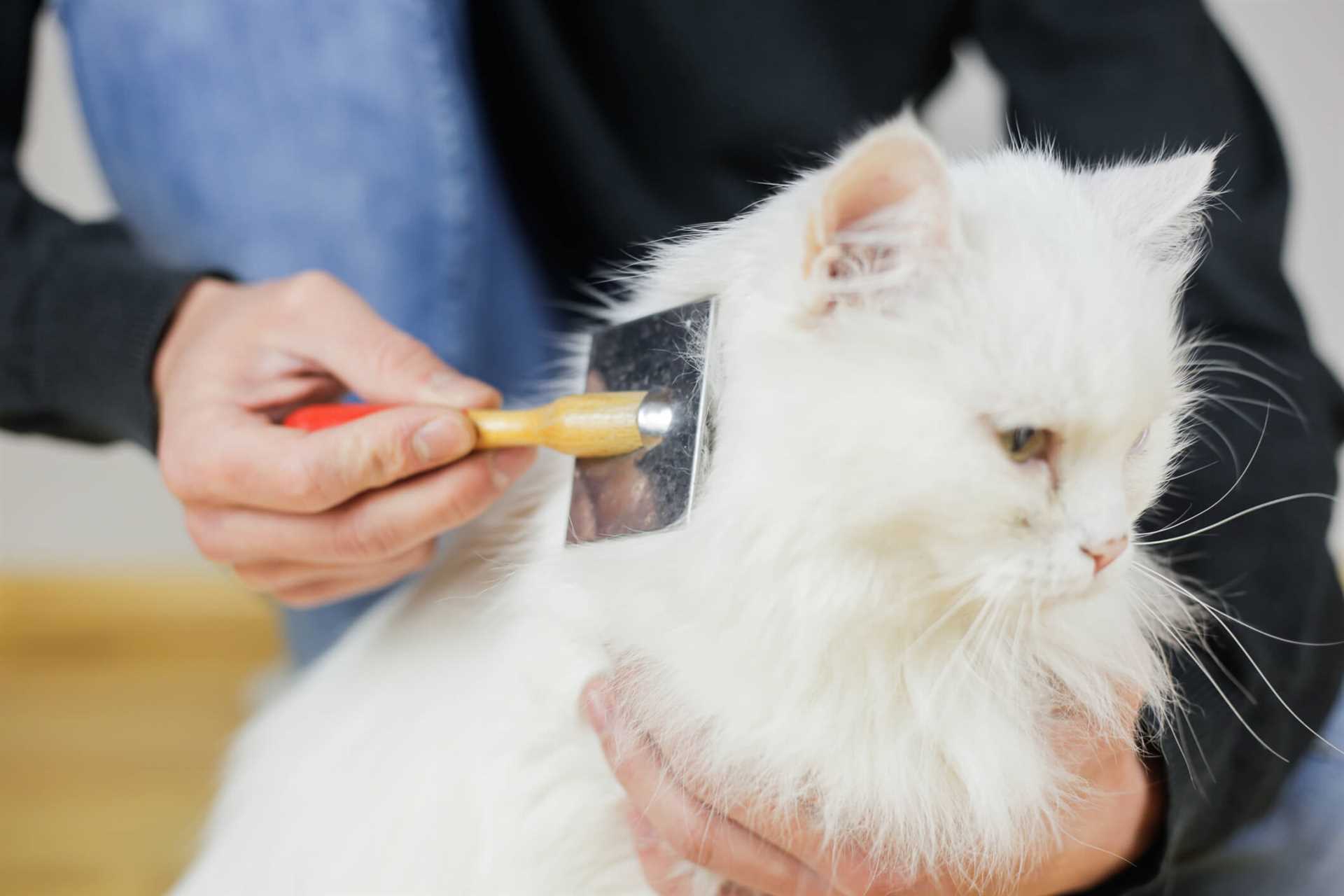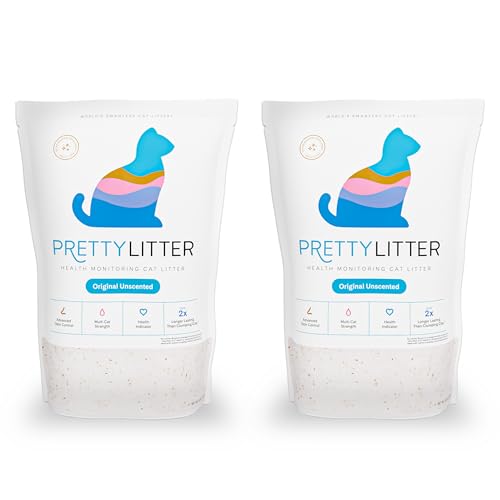



Begin with a high-quality comb designed for furry friends, ensuring it has wide-set teeth to tackle tangles without pulling. Gently slide the comb through sections of fur, starting from the base and moving outward. This technique minimizes discomfort and reduces the risk of breakage.
Schedule grooming sessions during calm moments, ideally when your furry pal is relaxed, perhaps after a nap. Establishing a routine helps your feline friend associate the process with positive experiences, making it less of a chore and more of a bonding activity.
Pay special attention to areas prone to matting, such as behind the ears and under the belly. If you encounter stubborn knots, use your fingers to separate them gently before resuming with the comb. Patience is key; rushing can lead to stress for both of you.
Incorporate treats to create a rewarding environment, reinforcing good behavior during grooming. This simple addition can transform sessions into a delightful experience rather than a necessary task.
Lastly, keep an eye on your companion’s skin condition. Regularly check for any irritations or unusual signs, as grooming can be a perfect opportunity to monitor overall health. Happy grooming!
Technique for Caring for My Luxurious Fur
Begin with a quality tool designed for my type of coat. A wide-toothed comb works wonders for detangling, while a slicker brush helps manage any mats. Select the right product based on your feline’s specific needs.
Steps to Follow

Start by ensuring I’m comfortable. Finding a cozy spot can make a significant difference. Gently lift sections of my fur, working from the roots to the tips. This method prevents breakage and discomfort. Always be cautious around sensitive areas like my belly and tail.
| Tool | Purpose |
|---|---|
| Wide-toothed comb | Detangling |
| Slicker brush | Mats removal |
| De-shedding tool | Reducing loose fur |
Frequency of Grooming
Establish a routine. Daily sessions help prevent mats and minimize shedding. If my fur becomes tangled, increase the frequency temporarily until I’m back to my smooth self. Pay attention to seasonal changes as well, as my coat may require more care during shedding periods.
Choosing the Right Tool for Your Feline Friend
The best choice for grooming my fluffy coat is a wide-toothed comb. It gently detangles without pulling on my fur, minimizing discomfort.
A slicker is also a handy option. Its fine bristles effectively remove loose fur and debris, keeping my coat looking pristine. Just be cautious near my sensitive areas.
An undercoat rake can be beneficial too, especially during shedding seasons. It reaches deeper into my fur to capture those pesky loose strands that other tools might miss.
For regular maintenance, a bristle brush works well. It smooths my outer coat and distributes natural oils, ensuring my fur stays shiny and healthy.
Consider the handle too. A comfortable grip makes grooming sessions much more pleasant for both of us. Choose a tool that feels good in your paw.
Preparing Your Cat for Grooming Sessions
Start with creating a calm environment. Choose a quiet space where distractions are minimal. This helps reduce stress levels for both of us.
Use treats to create a positive association. Offer a few tasty morsels before and during the grooming process. This encourages cooperation and makes the experience enjoyable.
Introduce the grooming tools gradually. Allow me to sniff and explore the items before using them. This familiarization builds trust and reduces anxiety.
Practice handling gently. Spend time petting and massaging my fur so I get used to the sensation. Gradual exposure is key.
Schedule sessions for when I am relaxed. Early mornings or after playtime are ideal. My mood is better, making it easier to engage.
Monitor for signs of stress. If I show discomfort, take a break. Let me walk away if needed. Patience is vital.
Keep sessions short. Aim for 10-15 minutes, gradually increasing the duration as I become more comfortable.
Regularity matters. Consistency helps me adapt over time. Aim for weekly sessions to maintain my fur and keep me accustomed to the process.
Techniques for Grooming Luxurious Coats Without Causing Discomfort
Begin with gentle strokes, using a soft touch to avoid startling me. Focus on small sections at a time, moving from the head towards the tail. This method allows me to relax and enjoy the process.
Tools and Techniques
- Utilize a wide-toothed comb to gently detangle any knots. Start at the ends and work your way up, using a steady hand.
- Employ a slicker tool for removing loose strands. Be cautious around sensitive areas like the belly and underarms.
- Incorporate a bristle brush for smoothing the outer coat. This enhances shine and distributes natural oils, making my fur look fabulous.
Comfort Strategies
- Always groom in a quiet space. A calm environment reduces stress and helps me feel safe.
- Take breaks during the session. Allow me to stretch and move around to prevent any anxiety.
- Use treats and praise to create a positive association. This makes grooming a fun experience rather than a chore.
Listening to my body language is key. If I show signs of discomfort, like twitching or pulling away, it’s time to pause and reassess. The goal is to make grooming a bonding experience that we both enjoy.
Identifying and Dealing with Mats and Tangles

Spotting mats and tangles requires a keen eye. Check regularly for clumps of fur that feel different from the surrounding coat. Pay attention to areas behind the ears, under the legs, and around the neck, as these spots are prone to tangles.
Removing Mats Safely
Use a wide-toothed comb to gently tease apart mats. Start at the edges and work your way in, using your fingers to hold the fur near the skin to prevent pulling. If a mat is too tight, consider using a detangling spray designed for feline fur to ease the process.
Preventing Future Issues
Regular grooming sessions are key to preventing mats. Aim for a consistent schedule, adjusting frequency based on your companion’s coat condition. Keeping your buddy’s environment free of excessive dust and debris will also help maintain a smooth coat.
Establishing a Regular Grooming Routine
Consistency is key. I recommend setting aside a specific day and time each week for my grooming sessions. This helps me get used to the routine, making it less stressful for both of us.
Start with short sessions. Ten to fifteen minutes is ideal, especially at first. Gradually increase the duration as I become more comfortable with the process. Keep an eye on my body language; if I seem agitated, it’s time to take a break.
Use treats as motivation. Reward me with a favorite snack after each grooming session. This builds a positive association with the experience and encourages me to cooperate in the future.
Creating a Comfortable Environment
Choose a quiet spot in the house, free from distractions. A cozy blanket can make the space inviting. Make sure the temperature is comfortable too; I prefer a warm spot to relax while getting groomed.
Consider playing some soft music. It can create a calming atmosphere, which helps keep me relaxed during our time together. If you’re looking for a distraction for yourself, you might even want to check out the best budget friendly digital camera to capture our moments.
Regular grooming not only keeps my coat looking fabulous but also strengthens our bond. Let’s keep up the routine!
Recognizing Signs of Skin Issues During Grooming
During grooming, pay attention to changes in your skin that may indicate underlying problems. Redness, swelling, or any unusual bumps can signal irritation or allergies. If I start flinching or pulling away, it could mean discomfort from a skin issue.
Observing Fur and Skin Condition
Look for excessive shedding or patches of missing fur; these can be signs of stress or health concerns. Dry, flaky skin may indicate a need for better hydration or a change in diet. If I show signs of excessive itching or licking, it’s crucial to investigate further.
When to Seek Help
If you notice persistent issues, consult with a veterinarian for a thorough examination. Regular monitoring of skin health during grooming helps catch potential problems early, ensuring I stay happy and healthy. And while you’re at it, check out the best litter box for maine coon cats to keep my space clean and comfortable!









